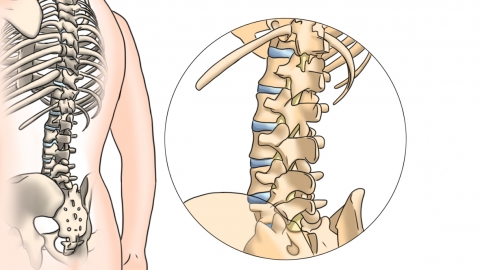How to Exercise with Ankylosing Spondylitis
Generally, patients with ankylosing spondylitis are advised to engage in exercises such as wall-standing, spinal stretching, hip flexion and extension training, deep breathing exercises, and swimming. The details are as follows:
1. Wall-standing
Stand with feet shoulder-width apart, back, head, and buttocks pressed against the wall, arms naturally hanging down, and chin slightly tucked inward. Maintain this posture for 10–15 minutes each time. This exercise helps maintain the physiological curvature of the spine, prevents stiffness and deformity due to the disease, strengthens the back muscles, and reduces pressure on the spine.

2. Spinal stretching exercises
Lie on your back on the bed with knees bent, arms clasped behind your head, and slowly lift your upper body until your shoulders leave the bed surface. Hold for 2–3 seconds before slowly lowering back down. Repeat 5–8 times. This active spinal extension improves circulation around the spine, relieves muscle tension, reduces inflammatory adhesions in the spinal joints, and delays the progression of stiffness.
3. Hip flexion and extension training
Sit upright with both feet flat on the floor. Slowly raise one knee as high as possible, hold for 2 seconds, and then slowly lower it. Repeat on the other side. Perform 8–10 repetitions per side. Ankylosing spondylitis often affects the hip joints. This training helps maintain hip joint mobility, prevents stiffness and restricted movement, and ensures normal performance of basic activities such as walking and standing up.
4. Deep breathing exercises
Sit or stand with hands placed on the abdomen. Inhale slowly through the nose, feeling the abdomen expand, then exhale slowly through the mouth, allowing the abdomen to contract. Perform this exercise for 5–10 minutes each time. The disease may affect chest mobility. Deep breathing exercises help maintain thoracic expansion, ensure normal lung ventilation, and prevent a decline in respiratory function caused by thoracic stiffness.
5. Swimming
Choose strokes such as freestyle or breaststroke, swim 2–3 times per week, and aim for about 30 minutes per session. Swimming allows the body to be in a weightless state, enabling comprehensive movement of the spine and hip joints without compressing the spine. It strengthens the whole-body muscles, improves joint flexibility, and the buoyancy of water reduces the impact of exercise on the joints.
In addition, ankylosing spondylitis patients should avoid strenuous exercise, prolonged bending, or weight-bearing movements during physical activity to prevent worsening joint damage. Exercise intensity should be increased gradually, and if significant pain occurs during training, it should be stopped immediately with adequate rest. Patients should also keep warm in daily life to avoid cold-induced joint discomfort, have regular follow-ups, and adjust the exercise plan according to their physical condition.






